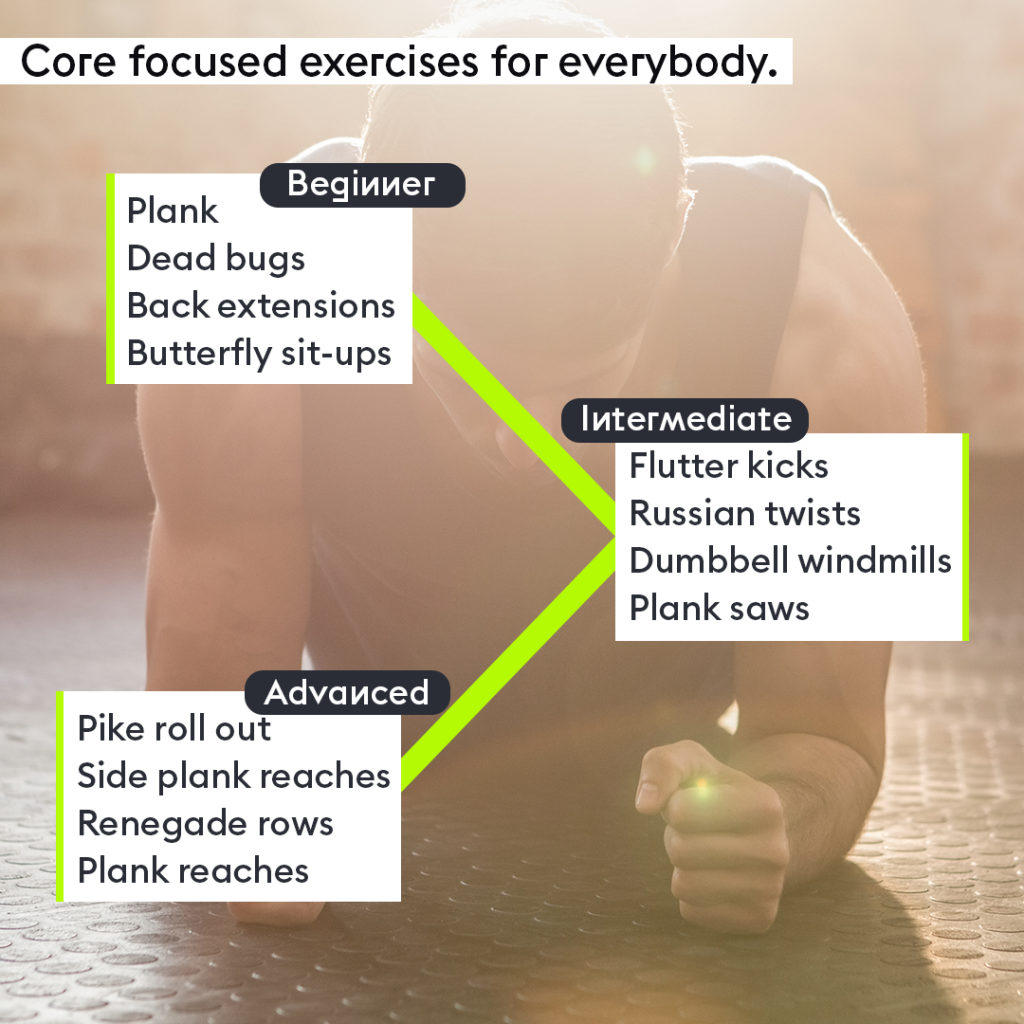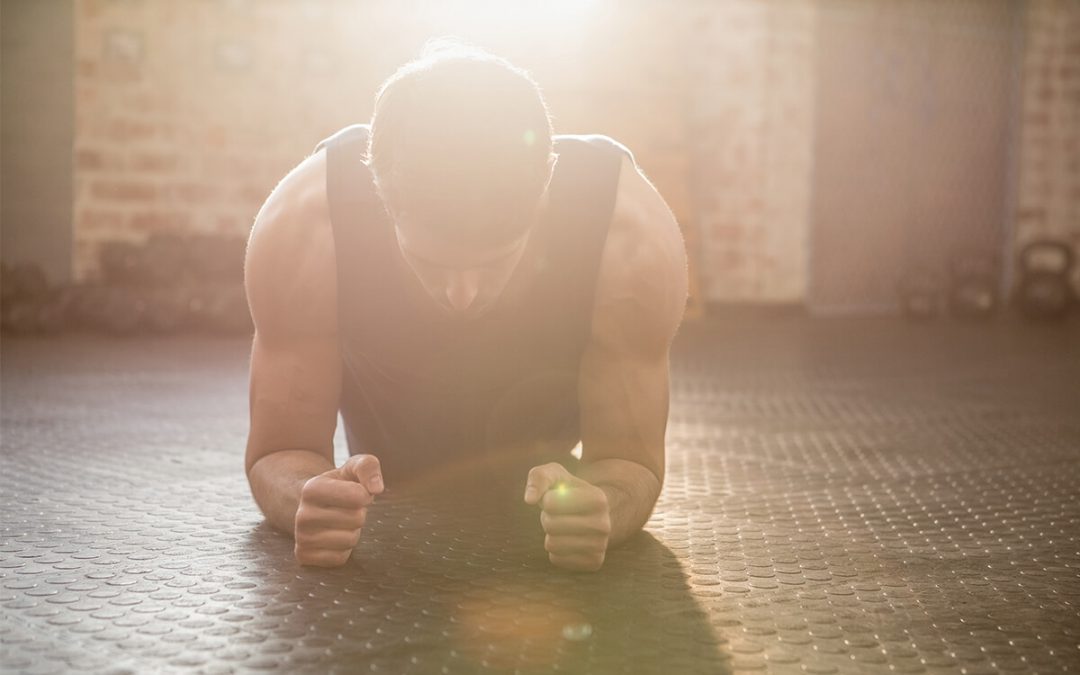When it comes to exercise, the core comes up a lot. ‘Engage the core’ is the instruction shouted at you in exercise classes, and by PTs on the gym floor.
But it’s not just about getting yourself a flat and toned tummy. The core is essentially your support system in everyday life. And in the gym. It helps with your posture, protects your body from injury, and stabilises you every time you lift a weight.
When you develop a strong core, you can progress with strength training much more effectively.
A pretty good starting point. Lots of people assume the core and the abs are the same thing. Although the abdominal muscles are part of it, the core is really a much larger group of muscles that spans all the way up and around our trunk.
The muscle groups in the core include the rectus abdominis, the internal and external obliques, the erector spinae, the latissimus dorsi, the lumbar muscles, and the pelvic floor. But there’s arguably loads more too – from those really deep in our body, to those at the more outer layer.
To simplify it: your core is the muscles that would be left if you removed your arms and your legs.
Your core is also directly related to your posture. Strengthening the muscles on the back and lengthening the ones at the front is key to maintaining correct, upright posture and a neutral spine.
On top of its huge role in everyday life, your core is integral to your work at the gym too.
Its job is to stabilise you throughout all your movements. When it comes to weightlifting, you rely on it even more.
When performing exercises like squats, deadlifts, overhead presses, push-ups, and other key compound movements, your core’s job is to stabilise your entire body so that you can perform the action with a solid foundation, the correct form, and the right posture.
A strong and engaged core is at the heart of any effective exercise or lift.
If you don’t engage and develop your core as you exercise, you’re likely to injure yourself as other smaller muscle groups or event joints will absorb some of the load instead.
Without core strength at the foundation of the movement, you’re going to struggle to continue progressing. You won’t be able to develop strength and start to lift heavier if you can’t bring your core along with you on your journey.
As they say, the first rep should always be as good as the last one. If it’s not, bring the weight back down and focus on that form.
If you’re looking to strengthen the core so that you can lift more, it’s important to put it into practice. Practice the perfect form on your favourite free weight exercise with lighter weights for more repetitions. You can then build this up slowly as you make sure to keep core engagement and the right posture at the base of everything.
Avoid doing everything on the resistance machines. They help you isolate individual muscle groups, but they remove the need for the core to stabilise you. As you’re seated and supported, you don’t need to engage these muscles as much. In the same way that remaining seated for too many hours of the day can damage your core strength and posture, so can spending too much time at the resistance machines.
When we think of core work, it’s easy to focus only on things that tighten the tummy. Planks, sit ups, crunches, and V sits are great, but they ignore the muscles at the back.
Don’t forget about the muscles at the back of the body. They’re arguable more important as it’s these ones that need strengthening to improve your posture.
Make sure to include some back extensions, dumbbell pull overs, pull ups or assisted pull ups, supermans, and bent over rows into your routine too.
You don’t need to spend entire sessions focusing only on core specific exercises like planks and sit-ups. It would be impressive if you even could without doing some damage and not being able to laugh for the rest of the week.
Start off with your key compound lifts. Make them the focus of your workout, and do them first to make sure most of your energy is spent here.
When you’re finished, an added 5-10 minutes of core focused body or free weight exercise is more than enough to make sure your developing strength here. Include a range of exercises that you often update, so you’re varying muscular focuses and working across different planes of motion to ensure well-rounded core strength is coming your way.




